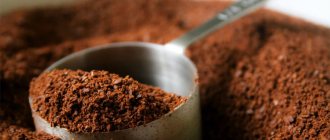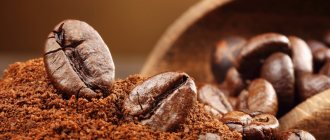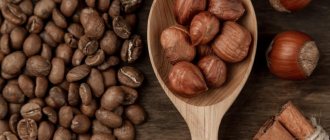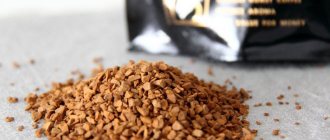Many people love the natural coffee drink, and in recent years coffee lovers have even learned how to brew it correctly. Unfortunately, only a few people think about how to store coffee at home. But improper care of the grain product leads to the fact that it loses its original taste and aroma in a matter of days. The rules for storing products are universal and do not depend on their type. Fortunately, modern product manufacturers have taken care to simplify the task as much as possible.
Has the coffee gone bad?
The short answer is, it's not like meat or dairy or fresh produce will spoil and make you sick if you consume it.
But the longer answer is yes, a cup of expired or spoiled coffee will not taste as good as a cup of recently roasted and freshly ground coffee beans.
When is the fun not worth the risk?
An uncharacteristic odor and the appearance of mold are evidence that expired coffee beans are seriously spoiled.
Raw coffee is rich in fats and similar substances that form fatty acids when roasted. With the oxidation of the latter, the coffee beans “give off” spoiled oil.
Another danger of “stale” coffee is mold, or mycotoxins. Because of them, coffee becomes bitter - you want to sweeten it.
What happens if you drink a drink made from spoiled grains?
Oxidized fats gradually “poison” the liver with ketones and pharmaceuticaldehydes, and mycotoxins cause heart and kidney diseases and affect the brain.
Therefore, if there are visible signs of unsuitability, it is better not to experiment with “overdue”.
Oxidation: the enemy of coffee
You've undoubtedly seen the results of oxidation on older cars: metal that was once shiny and new turns into a deep red rust.
You've also seen its effect on apples - the brown pulp that appears when sliced apples are left on the plate is also caused by oxidation.
Oxidation can affect all kinds of things, including coffee. Of course, your coffee won't rust or take on a different color, but it will undergo a transformation that will make it significantly less attractive than it once was.
But first things first.
Oxidation is where everything is exposed to oxygen and changes composition as a result of the movement of electrons.
A few moving electrons may seem like a small thing (they are microscopic, after all), but the process can affect the chemistry of whatever is being oxidized.
In the case of coffee, some of the sulfur compounds and oils deteriorate through oxidation, resulting in beans, ground grains, and brews that may taste or smell less than ideal.
Processing of coffee beans
When the harvest is harvested, the most important stage in the “life” of coffee begins – the extraction of beans from the berries. The pulp of ripe coffee cherries is sweet and pleasant to the taste; it contains approximately 4 times less caffeine than beans. In Yemen, the drink gisher has been prepared from it since ancient times; in Ethiopia it is called hashara.
Cascara - tincture made from coffee pulp
In other regions, until recently, the pulp of coffee berries was used as fertilizer. But now in Europe and America, cascara, an infusion of dried coffee berry pulp, is becoming increasingly popular.
There are 3 ways to process coffee beans:
- dry (natural processing);
- washed (wet processing);
- half-washed (honey).
Dry coffee processing
The dry method is the oldest and simplest. The collected coffee beans are laid out in a thin layer for drying on wooden floors, mats, “African beds” (they are frames with a mesh, mounted on legs approximately 1 m high).
Coffee cherries are very juicy, so drying takes 2–4 weeks. The most important thing is to prevent the berries from fermenting. Therefore, they are mixed periodically. It is believed that the pulp will dry well only if the coffee cherry is turned at least 20 times a day. Cover the berries at night, otherwise they will become damp. When the cherries dry to such an extent that 11-12% moisture remains in the grains, they are put into bags.
Packages of dry processed coffee are labeled as NATURAL, DP, DRY or DRY PROCESSED. Connoisseurs call its taste “wild”: the drying pulp imparts sweetness to the grain, it acquires a berry flavor and is fragrant with citrus fruits.
The problem is that the described qualities are mainly found in coffee dried using technology at special processing stations. However, the dry method is popular among poor farmers in regions where water is scarce. Coffee cherries are often laid out to dry on dirty mats. The grains absorb the odors of earth, grass, and fermented pulp.
Dry-processed coffee is cheaper and is used to make branded ground coffee.
Wet processing of grains (washed method)
The washed method is more expensive than the natural one: to clean 1 kg of berries, 10 liters of water are required. This is how ripe berries collected by picking are cleaned: unripe coffee cherries are difficult to depulp, their pulp is too hard.
Coffee processing is carried out 6–12 hours after picking the berries. They are soaked in water for a day, and then pulp and peel are removed using depulping machines. Gluten that is difficult to remove remains on top. For fermentation, depulped berries are soaked again for 6–72 hours, then washed. Damaged cherries float and are thrown away.
As a result, the grains remain in a durable parchment shell. They are dried until the moisture content reaches 12%, and then put into bags.
Coffee processed using the washed method is less sweet, but it contains fruity or chocolate-creamy notes and sourness. The taste of the drink is clean and delicate. This coffee is labeled WET PROCESSED, WASHED or WP.
Semi-washed method
With this method of coffee processing, the berries are soaked, depulped using machines, and then the gluten-coated beans are laid out to dry. They acquire a soft sourness and creamy fruity taste. Just as in previous cases, the grains are placed in bags.
Other culprits: Heat, Light, Humidity
Try to avoid glass containers. Or put them in a dark place.
While bright sunny days can be pleasant, light and heat are not beneficial to your coffee beans.
These two factors can actually speed up oxidation and quickly lead to stale coffee. However, while heat and light are good for good tasting coffee, humidity can be detrimental.
Excess moisture on either whole beans or ground beans can actually spoil them; if they've been in a warm, humid environment long enough, they can develop mold.
If you're unsure about the freshness of the beans, smell them before cooking; if you notice any musty or unpleasant odors, it's a good idea to choose fresher ones.
What will change?
Brewed coffee the next day and even after a couple of hours will not contain essential oils, which give the drink a divine taste and aroma. Fats in any product, including coffee beans, quickly oxidize. The cup will contain a liquid that vaguely resembles real coffee. In order to feel the difference between yesterday's and fresh, you don't have to be a gourmet or a professional barista.
There will be no useful substances left in the cup, but the grains contain vitamins PP, B1, B2, calcium, potassium and magnesium.
Proper storage is key
If you buy high-quality coffee, you probably get it from a well-known coffee shop in a bag.
This bag may be convenient, but when it comes to long-term storage, it's not the best solution.
Instead, when you get home, you'll want to empty your beans into a dark, airtight container to suppress oxidation as much as possible.
Many people put their container in the refrigerator or freezer to get the coffee out of the heat, but this is actually not a good idea.
Temperature changes and fluctuations in these conditions can affect humidity, which, as you now know, can negatively impact your coffee.
It is best to treat it like fine wine and store the coffee in a cool, dark place.
If you're lucky enough to have a wine cellar, that's great! If not, just find a cool corner of your kitchen where you can hide the container.
Can't be stored or thrown away
The suitability of coffee beans for consumption is determined by the method of production, variety and storage conditions.
Raw coffee
Green grains retain their properties for up to 9 years, but most manufacturers indicate a maximum shelf life of no more than 5 years.
As they approach a “venerable” age, raw grains acquire an uneven color and practically lose their aroma; crumble easily, or vice versa, become hard but brittle.
In the absence of an unpleasant odor, indicating a strong “stale”, the coffee is quite suitable for consumption.
But first, it is recommended to pre-fry it with the addition of cinnamon, cloves or anise. Deep heat treatment will “pull out” the remaining caffeine, and spices will replenish the missing aroma.
Roasted coffee
Do not rush to throw away roasted coffee sealed in an airtight package that is no more than 1 year expired. Open the pack: if the beans have not darkened, do not have an oily sheen and do not “give off” the smell of rancid oil, feel free to prepare the drink.
If in doubt, chew a couple of coffee beans.
If there is an unpleasant aftertaste, it is better to use the “overdue” for household needs.
Ground coffee
Its taste, aroma and original volume are preserved longer (from 1.5 to 3 years) and are better when vacuum packed.
A sealed paper or plastic bag ensures that the taste and quality of the ground powder remain unchanged for 9 and 6 months, respectively.
The ground powder comes into more contact with the air and releases carbon dioxide faster. Therefore, after depressurization of the packaging, manufacturers recommend using it within 14 days, until the aroma “dissipates.”
Is it possible to drink expired coffee, ground more than two weeks ago?
It will remain fully usable if you pack it in foil and place it in a container that does not allow light to pass through. The powder stored in this way can be used for brewing even after a month or a month and a half.
True, during this time only a thin “trail” of the previous aroma and a small reserve of “invigorating” caffeine will remain. But in the absence of visible signs of unsuitability, you are not in danger of being poisoned by a drink brewed from it.
Long lasting doping
Hermetically sealed instant coffee loses its taste very slowly - over 3, and sometimes even 5 years. And even in an opened jar it will remain saturated for several months after depressurization.
The only danger posed by a very old (more than 5 years old) soluble powder, rich not only in useful and aromatic, but also in chemical components, is the unpredictability of the “behavior” of this very “chemistry”.
Daily Grind
Grinding the beans just before cooking will also produce better flavor because the base has more surface area, which means faster oxidation.
If you don't already have one, consider purchasing a coffee grinder; a good manual coffee grinder will cost only $30. Or, if you need to buy pre-ground coffee, buy it in small quantities.











